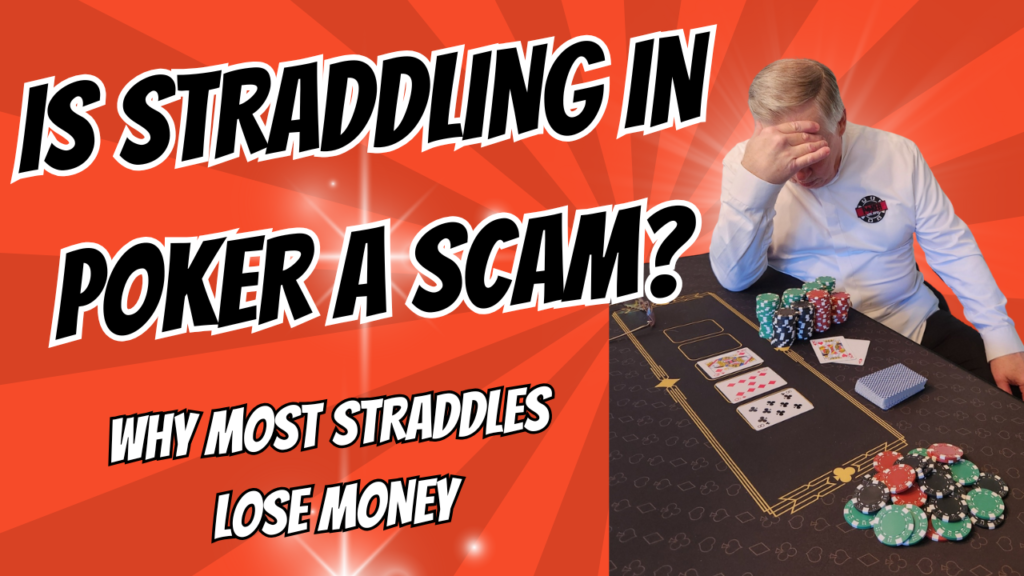GHOST OUTS IN POKER
THE INVISIBLE LEAK KILLING YOUR GAME
Ghosts Outs In Poker: what you’re about to read is not found in most poker books, training videos, or coaching sessions. In fact, we’ve never seen this concept formally broken down anywhere. That doesn’t mean it’s wrong—it means most players are still making costly decisions without it.
This is not a replacement for traditional out-counting or pot odds math. It’s an enhancement. A filter. A layer of clarity over assumptions that many players take for granted. We’re calling them ghost outs—and they can haunt your decision-making if you’re not aware of them.

WHAT ARE GHOST OUTS IN POKER?
Ghost outs in poker are illusory cards—outs that appear to help your hand but, in reality, either don’t exist or don’t actually make your hand a winner. These phantom cards show up in the way we calculate odds, but not in the actual deck. They’re blocked by opponents, they create losing second-best hands, or they complete draws that are already dominated. And yet, we still count them.
The entire structure of mathematically sound play is built on probabilities. If your probability is flawed—because your out count includes ghosts—then every decision built on that math is distorted. You’re not just misjudging the odds. You’re chasing a hand that never had a real chance to win.
How many times have you turned over your hand at showdown, only to see the exact card you needed sitting in your opponent’s hand—or vice versa? That’s your ghost. It This article is designed to show you how to recognize, eliminate, and adjust for ghost outs in real poker hands. We’ll explore four types of ghost outs, explain how they affect pot odds and equity, and give you the tools to calculate more realistic, grounded decisions at the table.
Let’s pull back the curtain and bring the ghosts into the light.
THE CURRENT METHOD - AND IT'S NOT WRONG
WHAT IS THE MATHEMATICAL PROBABILITY ALL OUTS ARE LIVE
In poker, the term “outs” refers to the number of unseen cards that can improve your hand. It’s a foundational concept—one that underpins pot odds, hand probabilities, and nearly every mathematical decision at the table.
For example, if you flop four cards to a flush—let’s say you have two hearts in your hand, and two hearts hit the board—then by traditional calculation, you have nine outs: the remaining nine hearts in the deck that would complete your flush.
This is how outs are almost universally taught, from poker books to training videos—including in over 80 videos on our own channel, where we’ve used this exact model to demonstrate how to align your hand odds with your pot odds to make better decisions.
Let’s be clear:
👉 We are not saying this method is wrong.
👉 We are not questioning its accuracy.
When used properly, it’s mathematically sound and continues to serve as the gold standard for calculating your equity in poker.
However…
What we’re going to do in this article is ask a deeper question:
❓ What is the mathematical probability that all of those outs are truly live?
❓ What are the chances that some of them are already in someone else’s hand—or even folded into the muck?
❓ And what if we’ve been using a model that systematically overestimates our true equity, especially in multi-way pots?
🛠️ This doesn’t mean we’re abandoning the traditional formula. We’ll continue to use it in all our future content—unless otherwise stated or demonstrated. What we’re doing here is providing an optional upgrade for players who want to dig into the deeper probabilities behind what’s actually left in the deck… and what isn’t.
We’ll be using a few common draw scenarios throughout the article to illustrate this concept:
• A flush draw on the flop (the classic 9-out situation),
• Overcards to the board (like KQ), and
• An open-ended straight draw with 8 traditional outs.
TWO OVERCARDS EXAMPLE
GHOST OUTS IN PLAY
You hold K♣ Q♦ and the flop comes 9♠ 7♥ 2♣.
Your hand didn’t connect — but you have two overcards.
Traditional Thinking:
You might say you have 6 outs — any King or Queen gives you top pair.
There are 3 remaining Kings and 3 remaining Queens in the deck:
3 + 3 = 6 outs.
But let’s take a closer look…
You’re in a 9-handed game, so 8 opponents are holding 16 cards total.
You hold K♣ and Q♦, so there are:
- 3 Kings left in the deck
- 3 Queens left in the deck
- That’s 6 total “outs” — if they’re still in the deck
But what’s the chance some of them have already been dealt?
STEP BY STEP MATH
🧮 Step-by-Step Math
Let’s calculate the probability that at least one other King is already in an opponent’s hand.
There are 3 Kings remaining among 50 unseen cards.
Probability at least one King is in opponents’ hands:
P = 1 − (probability no Kings in 16 cards)
P = 1 − [(47/50) × (46/49) × … × (35/38)]
Or shortcut:
P ≈ 1 − C(47,16) / C(50,16) ≈ 75.1%
- There’s a 75.1% chance at least one King is already in someone else’s hand
- Same probability applies to Queens: 75.1%
What about the probability that at least one of the six cards (3 Kings + 3 Queens) is in opponents’ hands?
We calculate that as:
Probability at least one of the six “outs” is gone:
P = 1 − C(44,16) / C(50,16) ≈ 93.6%
You might think you have 6 outs, but there’s a 93.6% chance that at least one of them is already in play — and often more than one.
In fact, the expected number of your outs in opponents’ hands is:
E[X] = 16 × (6 ÷ 50) = 1.92 outs gone
So your true equity is likely based on just 4.1 live outs, not 6.
Again, this isn’t to change your real-time decisions at the table.
It’s a deeper layer of understanding — and a caution against blindly trusting that your “outs” are all still available.
OPEN -ENDED STRAIGH DRAW: ARE ALL 8 OUT STILL ALIVE?
You hold 8♦ 9♠ and the flop comes 6♣ 7♥ Q♦.
You have an open-ended straight draw — a 5 or a 10 completes your straight.
Traditional Thinking:
You have 8 outs — four 5s and four 10s.
This is how outs are taught everywhere — books, training sites, even our own channel.
But let’s ask: Are all 8 outs really still in the deck?
This is a 9-handed game. That means 16 hole cards are in play — 2 per opponent.
You hold 8♦ 9♠. The remaining outs you need are:
- Four 5s
- Four 10s
- 8 total outs
But with 16 cards already dealt to other players, some of those 5s and 10s may be already in someone’s hand — even if they fold.
GHOST OUTS IN POKER - THE MATH STEP BY STEP
Let’s calculate the probability that at least one of your outs is already gone.
There are 8 outs (4 Fives + 4 Tens) remaining in a 50-card deck (52 total minus your two cards).
Expected number of your outs in opponents’ hands:
E[X] = 16 × (8 ÷ 50) = 2.56 outs
That means:
- On average, 2.56 of your 8 outs are already in other players’ hands.
- Leaving you with only 5.44 truly live outs.
Now let’s calculate the probability that at least one of your outs is already in play:
P (at least one of the 8 outs is in opponents’ hands)
≈ 1 − C(42,16) / C(50,16) ≈ 97.1%
- There’s a 97.1% chance that at least one of your 8 outs is already dealt
- And a very good chance that 2 or more are gone
🎯 Conclusion
While you’re technically drawing to 8 outs, the realistic average is closer to 5.4.
This doesn’t mean you stop playing draws.
It just means you add an extra layer of skepticism and precision to your equity assumptions — especially in multi-way pots.
As always:
✔️ We still use the traditional model
✔️ This is an enhancement, not a replacement
✔️ It’s designed to expose hidden bias in your math — and sharpen your edge over time
HOW GHOST OUTS IN POKER AFFECT YOUR EQUITY: FLUSH DRAW EXAMPLE
You hold two spades and the flop comes with two more spades, giving you four to a flush.
Traditional Thinking:
In most poker books and videos, this gives you 9 outs — the remaining 9 spades in the deck that would complete your flush.
But here’s the ghost math…
Before the flop is even dealt, in a 9-handed game, your 8 opponents are holding 16 total cards.
You know:
- There are 13 spades in the deck.
- You already hold 2.
- So, 11 spades remain among the 50 unknown cards.
GHOST OUTS CALCULATIONS: THE FLUSH DRAW
We want to know:
How many spades are likely to already be in your opponents’ hands before the flop is dealt?
Expected value = (Opponent cards) × (Remaining spades ÷ Remaining cards)
E[X] = 16 × (11 ÷ 50) = 3.52 spades
🎯 Conclusion
Even before the flop, about 3.5 of your “outs” are already gone. They’re sitting in someone else’s hand — maybe even in a hand that folded preflop.
That means your realistic number of flush outs is not 9 — it’s closer to 5.5.
This doesn’t mean you ignore the 9-out rule when calculating pot odds at the table. But it does mean your true equity may be overestimated — especially in multi-way pots.
And that’s what ghost outs are all about:
➡️ Recognizing that not all outs are created equal — and not all are still in the deck.
HOW TO USE THIS IN REAL GAMES
So what do you actually do with this information?
You don’t need to recalculate ghost outs on every single hand. This isn’t about paralysis by analysis—it’s about sharpening your edge in the spots that matter most.
Here’s when to use it:
- Multiway pots with more than 2 players
- Hands with marginal pot odds or close decisions
- Late-stage tournament spots or high-stakes cash games where every edge counts
If ghost outs apply to every hand, the natural question is:
Why emphasize multiway pots?
Here’s why.
EQUITY THRESHOLDS ARE TIGHTER
PLAYERS OVERESTIMATE THEIR ODDS
MORE PLAYERS MEANS MORE BLOCKERS
In heads-up pots, you only need around 33% equity to profitably call a pot-sized bet.
But in multiway pots, your required equity jumps dramatically—often 40% or more—to make the same call. That means you can no longer afford to assume all 9 of your outs are live when chasing a flush. If even 1 or 2 of those outs are ghosted, your equity may fall below profitability—and you won’t even realize it.
.
Most players are taught to treat “standard outs” as fixed truths:
• Flush draw? 9 outs.
• Open-ended straight draw? 8 outs.
• Two overcards? 6 outs.
This works fine in heads-up pots, where the margin for error is wider. But in multiway pots, those same players now make calls they shouldn’t, believing their odds are better than they really are. Ghost outs quietly push their actual equity down—just enough to make their call a long-term leak.
Remember, ghost outs refer to unseen cards in opponents’ hands—whether they’re active or not. But when more players stay in the pot, the chance that one of them is holding an actual blocker to your draw goes up significantly.
It’s one thing to assume that 3 of your 9 flush outs are gone. It’s another thing entirely to realize that one of those 3 cards is now actively working against you in a live hand—being used to bet, raise, or slow-play a made hand that you’ll never catch up to.
GHOST OUT EXIST WHETHER A HAND IS FOLDED OR NOT
Ghost outs exist whether a hand is folded or not. But in multiway pots, they go from being a hidden tax on your equity… to a visible leak in your win rate.”
When multiple players are in, you have less room for error, less reliable equity, and a higher likelihood that your supposed “outs” are already working for someone else.
Use ghost out math to refine your decision-making—not replace your standard pot odds, but enhance them with a better understanding of what’s truly left in the deck.
WHY ISN'T GHOST OUTS IN POKER TAUGHT? (BUT SHOULD IT SHOULD BE)
If you’ve read this far, you may be wondering something perfectly reasonable:
“Why isn’t this already common knowledge?”
“Why don’t poker books, videos, or training sites ever mention ghost outs?”
There are several reasons—and none of them have to do with the concept being flawed.
IT'S HARDER TO TEACH
MOST TRAINING MATERIALS USE SIMPLIFIED MODELS
Ghost outs introduce a second layer of probability to hand analysis. Instead of simply counting “how many cards complete my hand,” you now have to ask, “how many of those cards are actually left in the deck?”
That requires:
- Understanding preflop hand distribution across a full table,
- Estimating suit and rank overlap among opponents,
- And recalibrating your perceived outs as probabilistic, not guaranteed.
For many coaches and content creators, it’s simply easier to say “you have 9 outs” and move on.
From beginner books to advanced solvers, poker education often relies on simplified models to explain concepts quickly. These models:
- Treat all outs as equal,
- Assume decks are complete (except for board + your hand),
- And skip deeper questions of card removal unless using explicit blockers.
While these simplifications are helpful for teaching fundamentals, they quietly leave out the probabilistic reality of what’s actually left in a 52-card deck after 8 other players are dealt in.
Ghost outs live in that gap.
IT'S EASY TO MISS-EVEN FOR SERIOUS PLAYERS
Even experienced players who know about card removal often treat it passively:
- They recognize blockers when it’s convenient.
- They consider suits when holding a nut flush draw.
But they rarely pause to ask:
“How many of my outs are already gone?”
It’s not that ghost outs are a controversial theory. It’s that no one ever thought to formalize the math… until now.
IT DOESN'T REPLACE ANYTHING-SO IT'S OFTEN OVERLOOKED
THE CHURCH OF REASON INSIGHT
Ghost outs don’t overthrow poker math. They don’t invalidate pot odds or change fundamental hand equities. In fact, the traditional formulas for calculating outs and equity still work—and they always will.
But what ghost outs do is this:
Sharpen your understanding of why your flush missed.
Help you realize your overcards were already in play.
Reveal why your straight draw bricked, again.
They don’t change the rules of poker.
They just help you see the cards more clearly.
At its core, the concept of ghost outs is not just about math—it’s about reality.
Poker is a game built on incomplete information, but that doesn’t mean the information is unavailable. It means we often choose to ignore it. We prefer cleaner, simpler formulas that make us feel in control—even when that control is an illusion.
“I had 9 outs.”
No—you had up to 9 outs.
And several of them were already dead.
This is what the Church of Reason calls value rigidity—our refusal to let go of an idea once we’ve invested in it. When we calculate our outs, we assign value to those cards. We hold that value tightly. But if we never pause to ask whether that value still exists, we end up chasing ghosts.
REAL STRATEGY IS WILLING TO ASK BETTER QUESTIONS
The disciplined poker player understands:
- Not all draws are created equal.
- Not all outs are truly live.
- And not all assumptions should be trusted.
Ghost outs ask a deeper question:
“Am I playing the numbers in my head—or the cards that were actually dealt?”
The answer won’t always be precise. That’s okay. The point isn’t to chase certainty—it’s to make better decisions in uncertain conditions.
That’s what the Church of Reason is built on.
FINAL THOUGHTS: GHOSTS IN THE MACHINE
Ghost In Poker outs aren’t a gimmick or a trick—they’re a reminder that every poker hand is built on deeper layers of probability than most players ever consider.
If we hold a flush draw and assume we have 9 outs…
…we may be right.
But we may also be dramatically wrong.
And the difference between those two outcomes?
It’s often hiding in plain sight—folded into the muck or buried in another player’s hand.
Here’s the truth:
✅ The standard method of counting outs is simple, useful, and remains the foundation of good decision-making.
✅ But ghost outs reveal the hidden margin of error baked into that system.
✅ And by acknowledging it, even approximately, we move closer to reality—and further from wishful thinking.
Poker isn’t a game of perfection.
But it is a game of precision.
Even a slight edge in understanding can tilt the outcome of a session—or a career.
So use this tool wisely.
Not to replace what you know…
…but to refine it.
Welcome to a deeper way of thinking.





